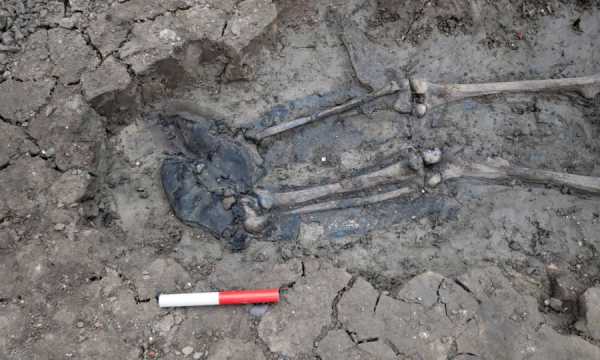Leather was a highly prized material in Tudor Britain, making this find even more unusual.

Cape MOLA infrastructure. Well-preserved leather boots aged 500 years.
The company also said the banks of the Thames were not the safest place to hang out in the 15th and 16th centuries. Archaeologists said the man could have been a “fisherman, a vagabond or perhaps a sailor.”
“Leather can be very well preserved in London, especially if it’s found in a water-filled ditch or near the embankment,” said Beth Richardson, a specialist in the finds for the Mole archaeological team. So it’s no surprise to archaeologists that the leather has survived intact for centuries.
For Richardson, it is the shape and style of the boots that are of most interest. She explains that boots of that height were highly unusual in the man's time:
“They [boots] are always shoes or ankle boots,” Richardson said. “High boots just weren't very common in the Middle Ages, or in Tudor times, or in the 17th century. If you look at paintings, illuminated manuscripts or portraits, very few people wear boots.”
It is for this reason that archaeologists believe the skeleton probably belonged to a fisherman or a dock worker. According to Richardson, these boots were not fancy at all. “They were very basic boots,” says Richardson, explaining that they are essentially the modern equivalent of wellies, or “wellies” as they are commonly known in the UK.
Sourse: www.allthatsinteresting.com





